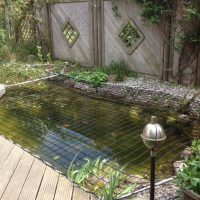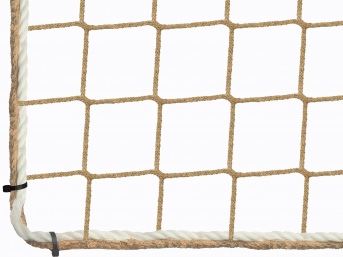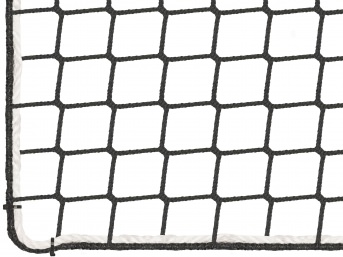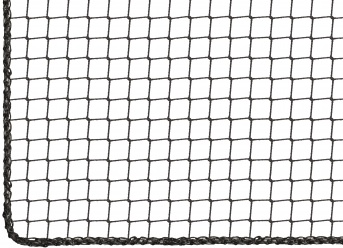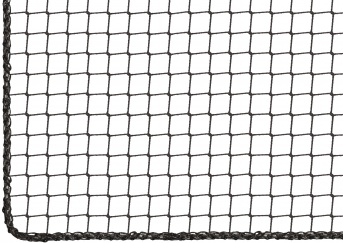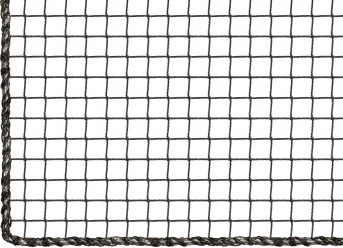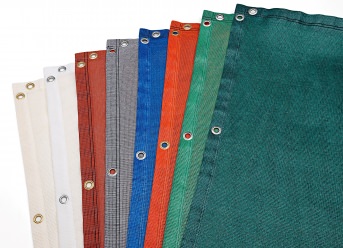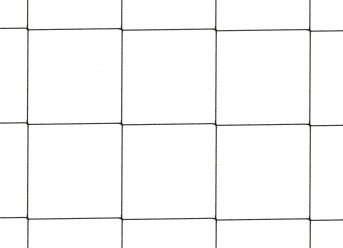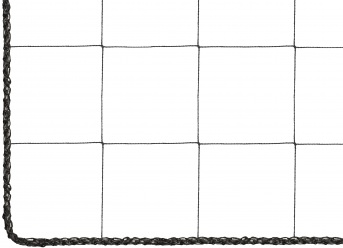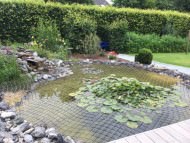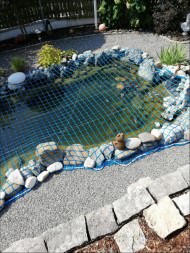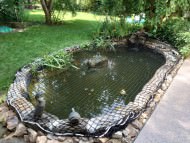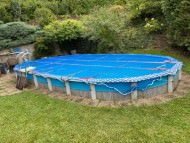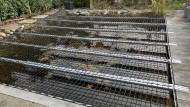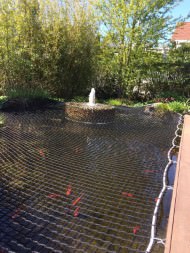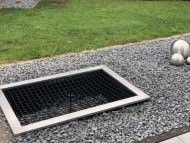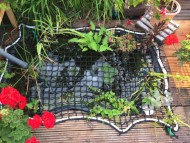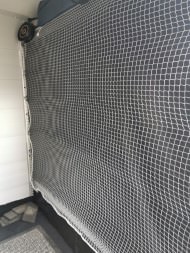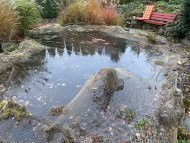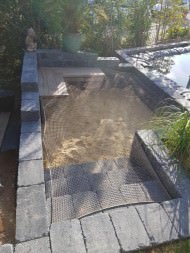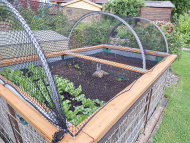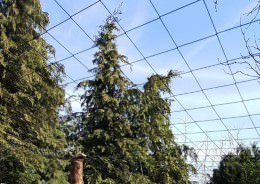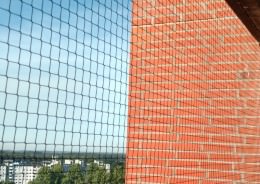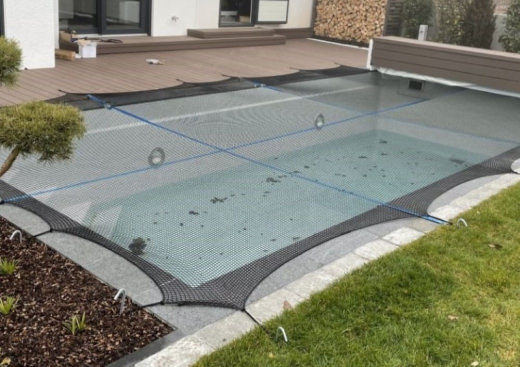Pond & Pool Cover Nets
Pond nets fall into three categories: pond covering nets to protect people from falling in, heron nets for the protection of ornamental and farmed fish and leaf nets to prevent leaves, fruits or twigs from falling in at different times of year. These nets fulfil different functions and make a significant contribution to facilitating the maintenance and protection of the pond.
Although natural forces are at work here, the decomposition of organic material results in a release of nutrients, resulting in the development of algae, which disrupts the balance in an (artificial) body of water and can consequently endanger the creatures living in the pond habitat that you have created. This not only has an aesthetic impact, but can also worsen the water quality, reduce the oxygen content and thus jeopardise the sensitive habitat of the pond inhabitants in the long term. Pond nets are therefore an indispensable tool for ensuring the long-term health and stability of a pond system.
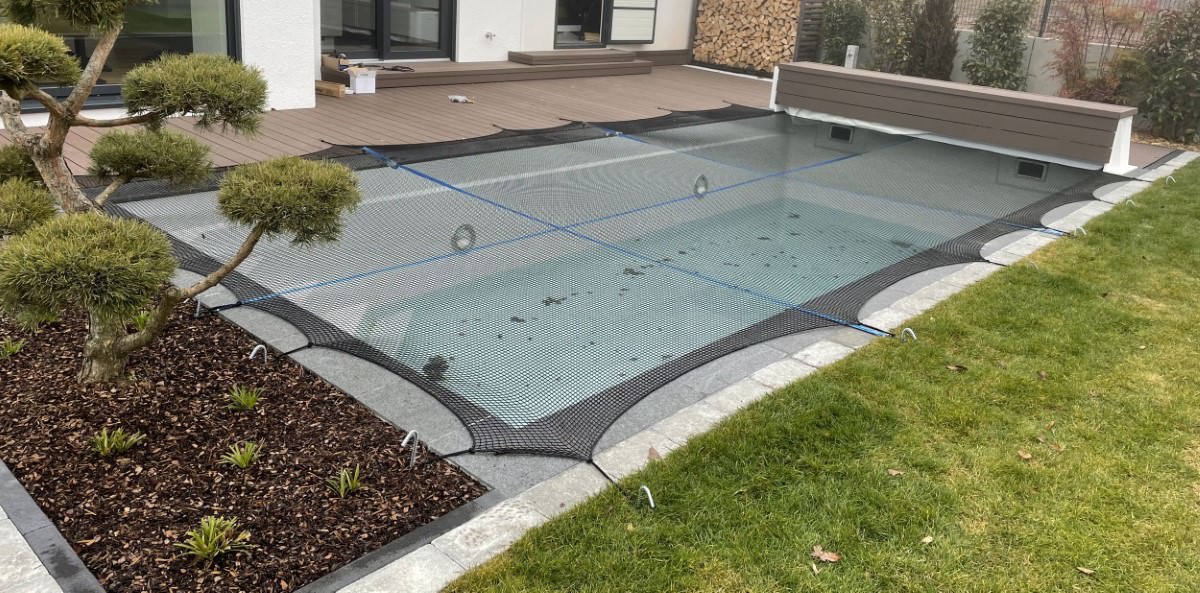
Sub-Categories to Pond/Pool Cover Nets
A Pond Net as Protection from Wet Surprises
Some ponds need to be given a covering due to external circumstances, as otherwise they could put persons like children who can’t swim or small animals at risk of drowning.
A pond net can thus protect children by preventing them from falling into your garden pond. Although the pond covering net for the garden is for private use, it has the same features as the fall safety nets used on building sites to break falls. This ensures maximum safety.
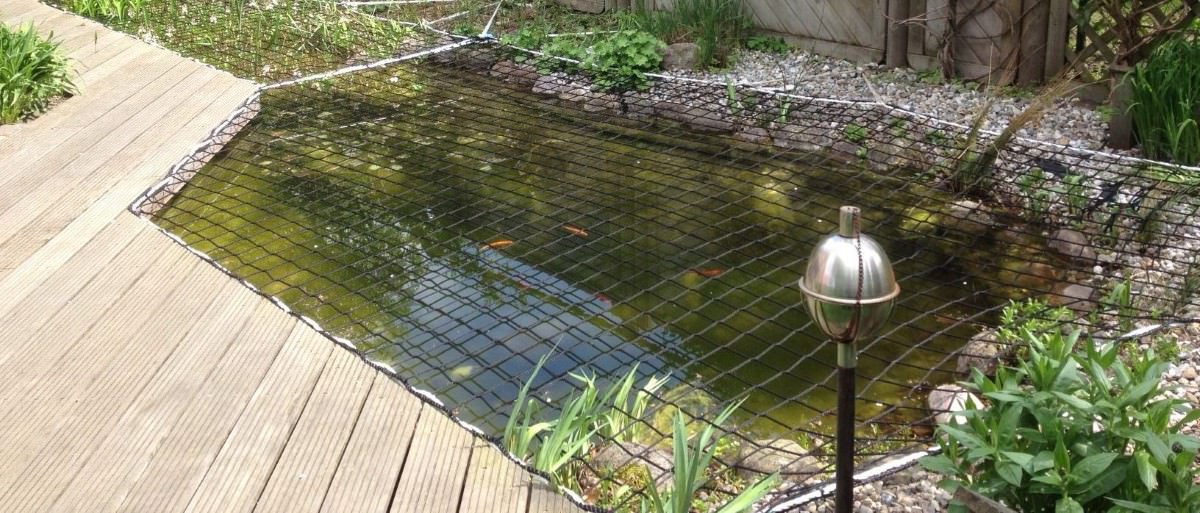
Covering nets for ponds have a material thickness of 5 millimeters and a mesh size of between 45 and 100 millimeters, as well as a reinforced border all around with an additional border rope.
The pond net is stable enough to catch a fully-grown adult. Due to the intrinsic elasticity of nets, it is important to check how far the net stretches towards the surface of the water under a load.
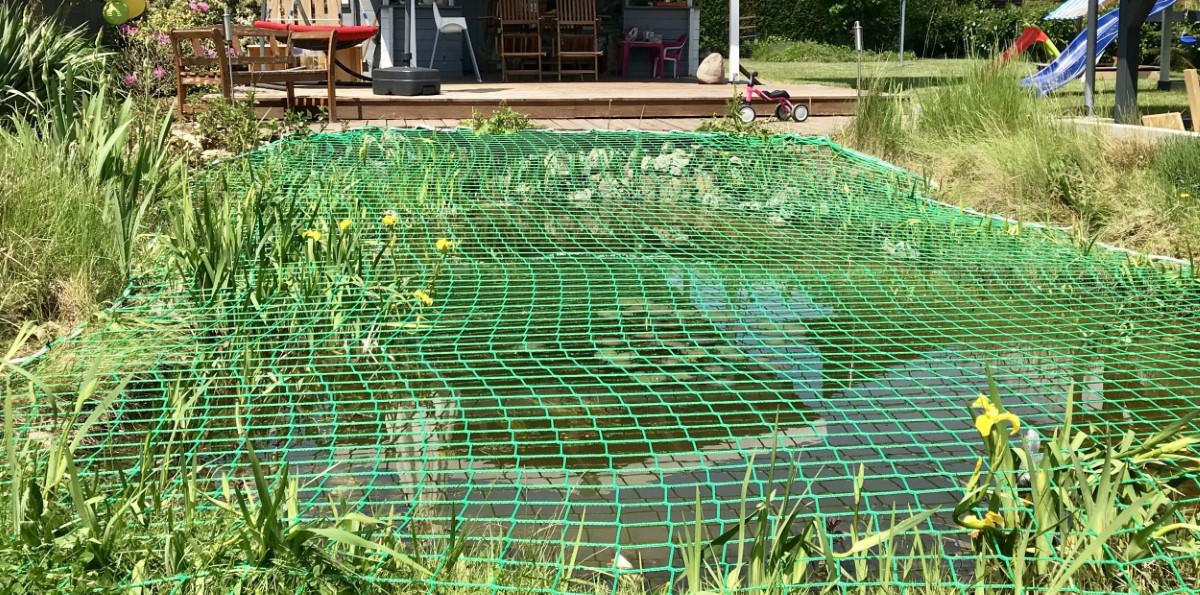
Protection from Falling Leaves Through Suitable Pond Nets
Leaves falling into the garden pond can be annoying. Solve the problem by installing a covering net! Depending on how many leaves could potentially contaminate your pond, choose a pond net by its material thickness.
Due to their weather resistance and UV-stability, these polypropylene nets are ideal for outdoor use and can effortlessly withstand years of contact with water. The nets do not even need to be taken down in the winter.
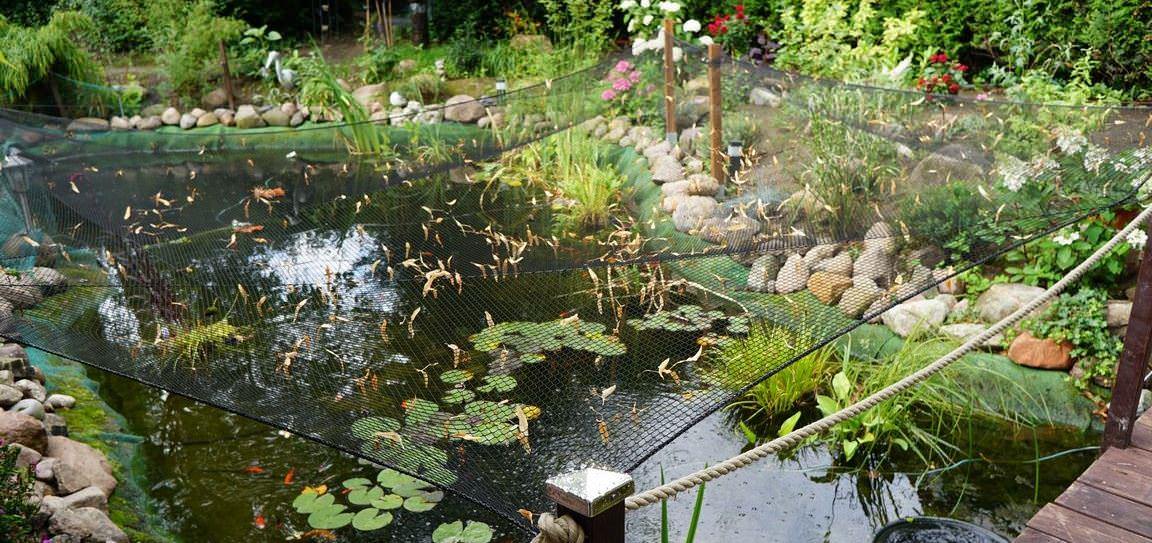
The fine-meshed pond nets from Safetynet365, with a mesh size of 20 millimeters upwards, protect ponds from small leaves and blossoms from fruit trees, beeches, oaks and maples. To begin with, the pond is measured out and the size of net is calculated; next, you order the net by the square meter in accordance with your individual measurements; finally, the net is installed.
A useful tip: make sure that the fallen leaves don’t accumulate in a hollow in the pond. A float can be a great help here. A pond net in inconspicuous black makes the pond an eye-catching feature in your garden, even in autumn.
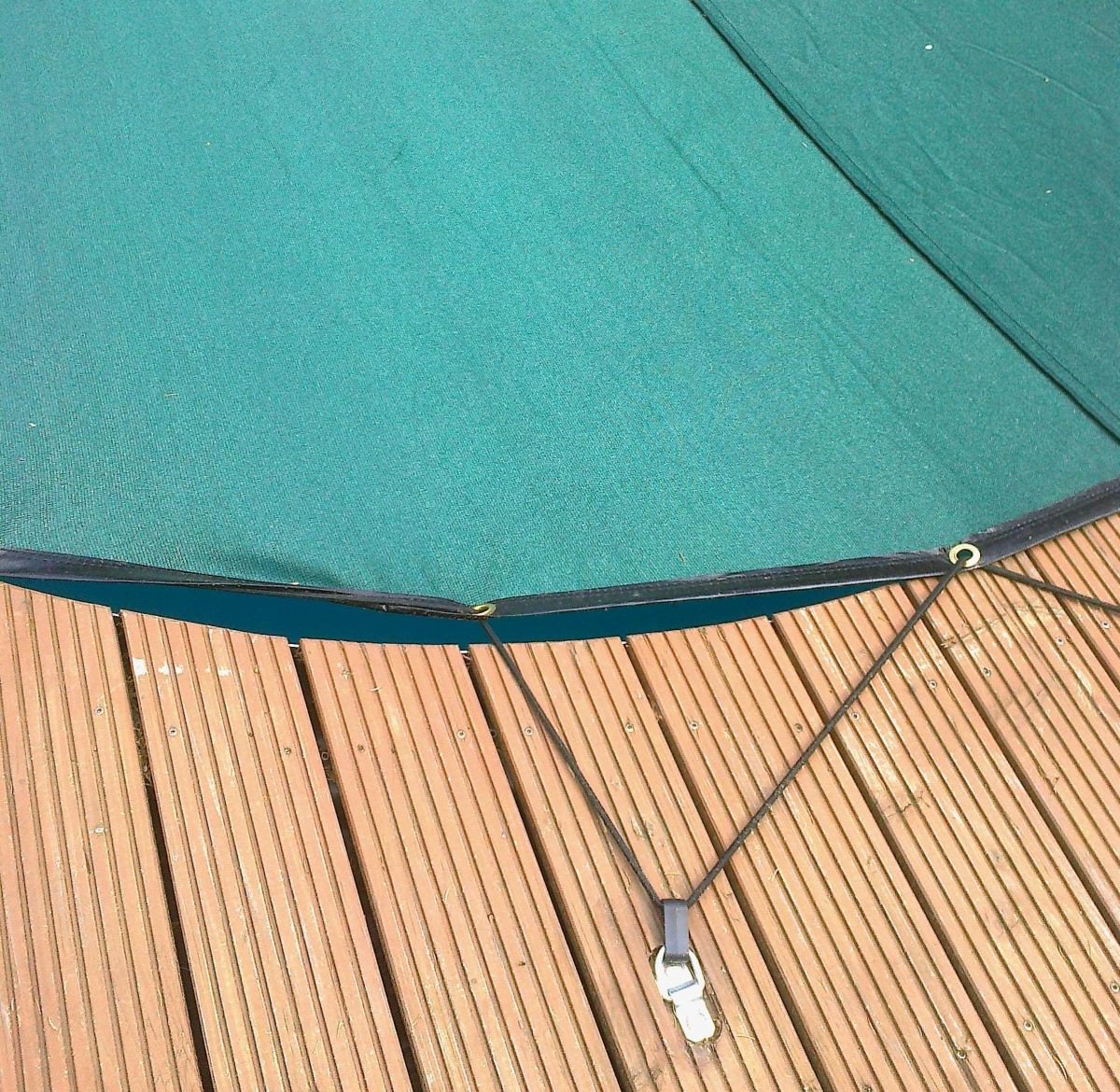
Pond Cover for Fall Safety
Pond Leaf Cover
Pond Cover for Heron Protection
Tips for a healthy garden pond without chemicals
Planting Vegetation
Balanced planting is absolutely vital for maintaining a healthy garden pond, as every single plant produces oxygen, thus helping the pond flora to maintain a balance. For example, the water plants filter phosphates and nitrates from the ground. Some water plants offer practical benefits for pond-dwellers, while others delight the pond-builder with their decorative features. Pond plants fall into three categories: waterside plants from marshy and moist zones, floating leaf plants and submerged pond plants. Marsh plants like meadow bistort or marsh valerian are planted right at the edge of the pond and, as preservers of the biological balance, have constant contact with the water. Well-known members of the showy floating leaf plant family include the water lily and brandy-bottle. Submerged pond plants such as elodea or hornwort provide natural hideouts for fish.
The Relationship Between Fish And Plants
The relationship between fish and plants needs to be balanced. There is no formula for this, but ideally the waterside plants should be distributed around the pond in a well-balanced way and should allow the fish enough space to swim, as well as places where they can retreat and rest. In addition, planting an uninterrupted line of vegetation along the water’s edge protects the fish from natural predators.
Sludge Suction Cleaner
If what you have is a fish pond rather than a natural biotope, a pond sludge suction cleaner is essential for preserving the health of the pond. It prevents sludge from accumulating and the deterioration of water quality which would deprive the fish of their life-sustaining natural habitat.
Filter Pump
The pond pump constitutes the heart of every garden pond: it guarantees oxygenation by filtering out organic contaminants from the pond-dwellers and plants or leaves. Different pump capacities and contaminant filters are required for different sizes of pond.
Shading
A garden pond location which receives a natural alternation of sun and shade promotes a healthy pond. This is why shady vegetation like trees, hedges or bamboo have a beneficial effect on a south-exposed pond. Ornamental ponds require special care: koi inhabiting them need to be protected from UV radiation in summer, as otherwise they can die due to life-threatening sunburn. However, the main reason for providing shade is to prevent unattractive thread algae, which infest the pond in sunny conditions. Awnings or close-meshed screen nets or shading nets can help here.
Pond Nets
Surrounding trees and bushes, which have a beneficial effect on the climate of the pond ecosystem all through the year, suddenly become a danger for an artificial pond in autumn. Falling leaves disrupt the biological balance, and fruits can be toxic for the pond-dwellers. A pond net or leaf net for your garden pond from Safetynet365 is the answer!
FAQ ‐ Frequently Asked Questions
- How can I make a pond childproof?
- What is the best heron protection?
- How can the formation of algae in the pond be reduced?
- What types of pond nets are there and what are they used for?
To childproof a pond, you can use a pond cover net. These nets are robust and stable enough to prevent children or animals from falling in. They are made of heavy-duty material, similar to safety nets used on building sites, and offer maximum safety. Make sure that the net is securely tensioned and fastened in such a way that it can withstand loads. You can also secure the pond area with fencing or restrict access with gates and locks. A combination of netting and fencing offers optimum protection.
Effective heron protection for a pond is a heron net that is stretched across the pond. This net prevents herons and other birds of prey from gaining access to the fish in the pond. Look for a net with a fine mesh size that is robust and weatherproof. Alternatively, reflective elements or moving figures can be used around the pond to deter herons. For optimum protection, a combination of heron netting and visual deterrents is recommended.
Leaf protection nets prevent falling leaves, fruit or twigs from entering the pond. When organic material falls into the pond, it decomposes and releases nutrients that promote the growth of algae. Excessive algae growth can disturb the balance in the pond, worsen the water quality and jeopardise the habitat of the pond inhabitants. A leaf protection net therefore ensures a healthy ecosystem in the pond.
There are three main types of pond nets:
Pond cover nets: These prevent people or animals from falling in and ensure safety around the garden pond.
Heron nets: These protect ornamental and farmed fish from birds of prey such as herons.
Leaf netting: They keep leaves, fruit and branches away from the pond to maintain water quality and minimise algae growth.
Each type has a specific function and helps to protect the pond and make it easier to maintain.
Sub-Categories to Pond/Pool Cover Nets
Our Benefits
Related Categories
Sub-Categories to Pond & Pool Cover Nets
modified eCommerce Shopsoftware © 2009-2025
Code & Implementation: Rehm Webdesign




